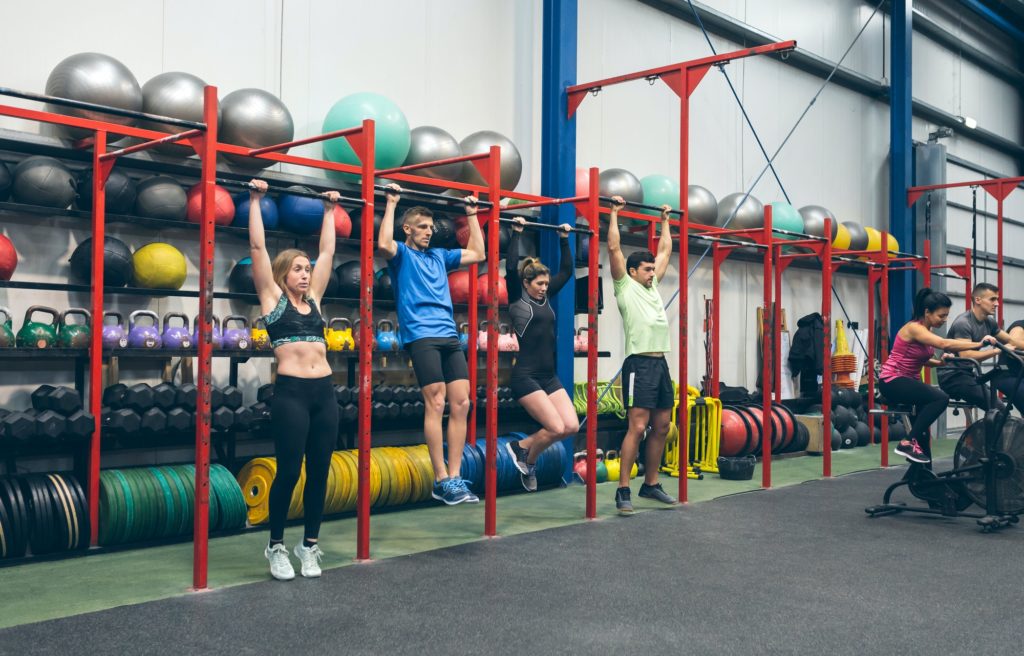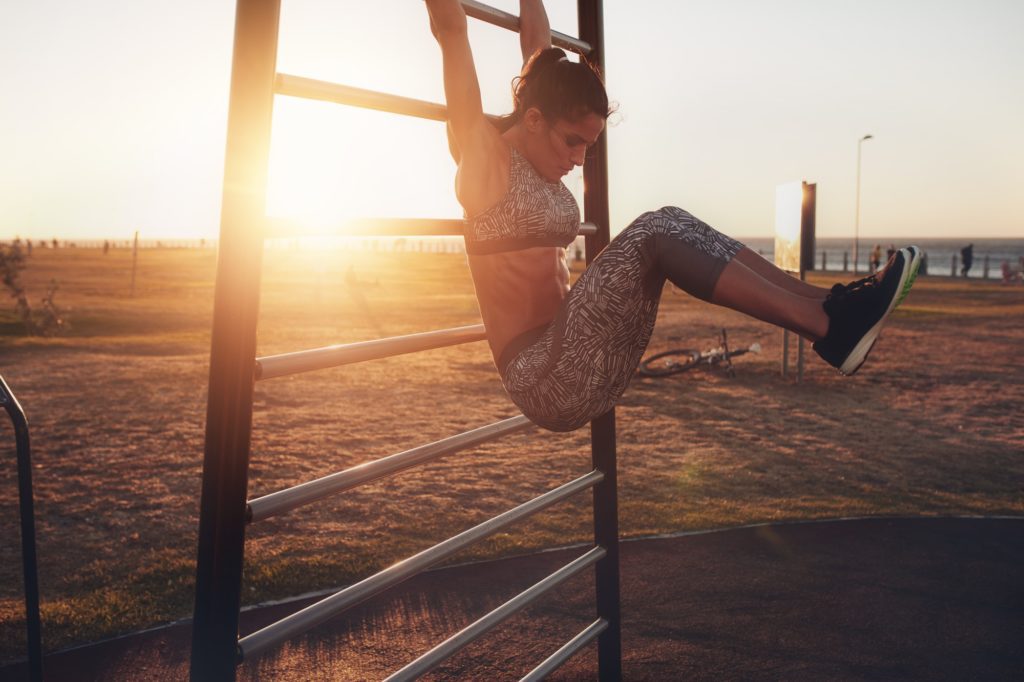If you’ve got a pull up bar at home, you might be surprised to find out how versatile this one piece of equipment actually is. It’s not just for pull ups! In fact, you can use your pull up bar for some seriously killer ab workouts.
So, let’s dive into some of the best pull-up bar ab workouts around. What should you know? What kind of moves can you perform?
What is a Pull-Up Bar Ab Workout?
Let’s start at the beginning here. While you likely already know what a pull-up bar is, especially if you have one hanging around in your home, let’s revisit this for a quick second for those that might be unsure.
Basically, a pull-up bar is a bar mounted high enough that you can hang off of it, such as in a doorway or as part of a cage mount. Usually, a pull-up bar is used for, well, pull-ups. A pull-up is an excellent upper body exercise where you hang from the bar, then proceed to pull yourself up until your chin is above the bar. It targets your biceps, lats, triceps, and more.
So, what are pull-up bar ab workouts?
A pull-up bar ab workout involves using the pull-up bar to work your core muscles in various ways. Usually, this involves leg raises, bending the knees, or curling the body upward.

Why Should You Perform a Pull-Up Bar Ab Workout?
Undeniably, ab workouts on a mat or the floor, such as performing crunches, can only get you so far. While a pull-up bar ab workout can take things to the next level, they also offer beginner moves, which you can eventually and easily progress from.
And there are many reasons to improve your abdominal strength. This group of muscles, including the transverse abdominis, the rectus abdominis, the internal obliques, and the external obliques, supports your torso, pelvis, and back. In fact, weak abdominal strength is closely associated with low back and hip pain.
This can also lead to an increased risk of injuries as you perform other exercises. For example, if you aren’t bracing your abdominals and core during a deadlift or squat, you might do serious harm to your lower back. This could not only sideline your training but leave you in pain for varying amounts of time (not ideal).
At the same time, you want to start pull-up bar ab workouts with a bit of caution. An ab exercise when performed from a pull-up bar and performed correctly has numerous advantages. Yet, when performed incorrectly, tension and pain in the low back can arise.
In other words, you want to make sure during each exercise that you are actively focusing on contracting your abdominal muscles. If you have back pain, it’s likely best to wait until your pain resolves before trying an abdominal workout that involves back flexion or twist movements.
What is Needed For It?
For pull-up bar ab workouts, all you need is a pull up bar and a solid grip. If you don’t have a pull up bar at home, your local gym likely has one ready to use. If you want to progress your workout even further you may also want to use ankle weights or bands. This can add an additional challenge for your ab muscles.
Lastly, you may want to wear gloves to help with your grip and to help protect your hands.
How to Perform Pull Up Bar Ab Workouts Properly, Technique, and Common Mistakes
Essentially, pull up bar ab workouts involve a combination of different movements. These exercises might involve the following:
Hanging Leg Raise
Start with your hands shoulder width apart on the pull up bar. From this start position and keeping your elbows straight, lift your legs straight in front of you so that they are parallel with the floor. While doing this, make sure to engage and brace your abdominal muscles to avoid using your low back. Further, make sure it is a slow and controlled movement so you aren’t using any swing or momentum to get your legs up. Rather, you want to be using your core.
Pause at the top of the movement, then slowly lower your legs back down to the start position. This is one rep. Perform 8-15 reps and 2-3 sets per workout.

Hanging Knee Raise
The hanging knee raise is very similar to the leg raise. Yet, instead of raising your legs straight up, bend your knees and keep your back straight, while bringing your knees toward your chest. Again, make sure you’re bracing your core to avoid back injury. Slowly lower and repeat for 8-15 reps and 2-3 sets.
Windshield Wipers
This exercise is definitely for those that are more intermediate or advanced. Start by hanging from the bar with your legs straight. Bracing your core, bring your legs up toward your hands, then allow them to fall to one side. Then, bring them back up and allow them to fall to the other side.
Like all bar exercises, ensure you maintain that tension through your core for every single rep. Aim for about 6-8 reps and 2-3 sets.
Hanging Knee Raise Twist
The hanging knee raise twist offers a more advanced version of the knee raise exercise above. As you would for the basic knee raise exercise, bend your knees and raise them toward your chest. As you do this, twist your knees slightly to the side, pause, then lower. Do this again for the opposite side.
Between each rep, strive to re-engage that core to prevent injury or pain. Aim to do about 10-15 reps and 2-3 sets.

Toes to Bar
Just as the name of this exercise states, you’re going to lift your toes as close to the bar as you possibly can. While most of these other exercises require you to maintain good posture, this one bends that rule a little bit.
Begin hanging from the bar with your hands shoulder-width apart. Brace your core, pulling your abdominal in, and lift your toes to almost meet your hands and the bar. Pause, then slowly lower. Repeat for 10-15 counts and perform 2-3 sets.
Programming: How to Add It to Your Workout
Adding the above exercises into your regular regime is pretty straight-forward. If you’re new to pull up bar ab workouts, start with the basic knee lift or leg raise until you get stronger, then add twist movements.
You can perform these exercises as a standalone workout or tag them onto the end of any workout.
If you have a shoulder injury, beware. Hanging from the pull up bar can aggravate your shoulder. Thus, a pull up bar ab workout might not be right for you, at least not right now. Focus on healing your injury before jumping into the exercises above.
Did You Know?
Did you know that the pull up bar has been around since the 1700s? It offered an easy way to gain strength and exercise for various parts of the population, gaining traction throughout the next couple of centuries.
Final Thoughts…
Ab workouts force you to specifically target your core muscles which are important for proper posture and injury prevention. The pull up bar offers a different take on ab workouts, providing a novel way to strengthen the abs without having to perform endless amounts of crunches. Try out the exercises above next time you’re at the pull up bar at the gym. Do you feel the burn?

